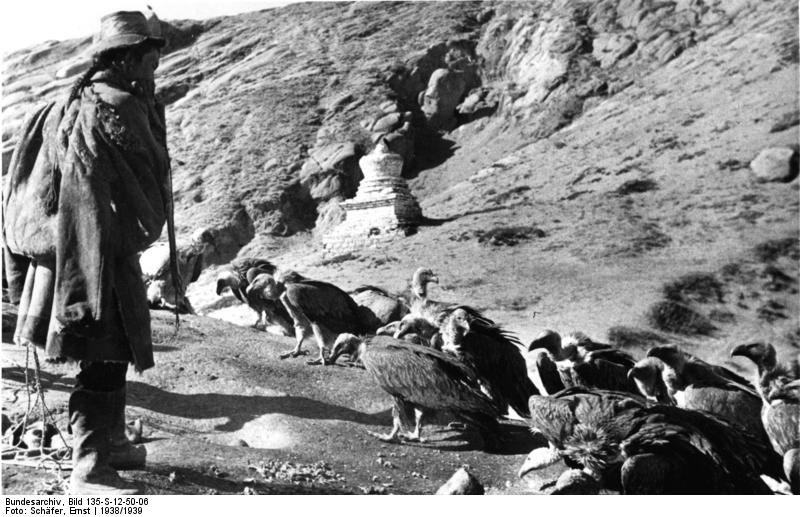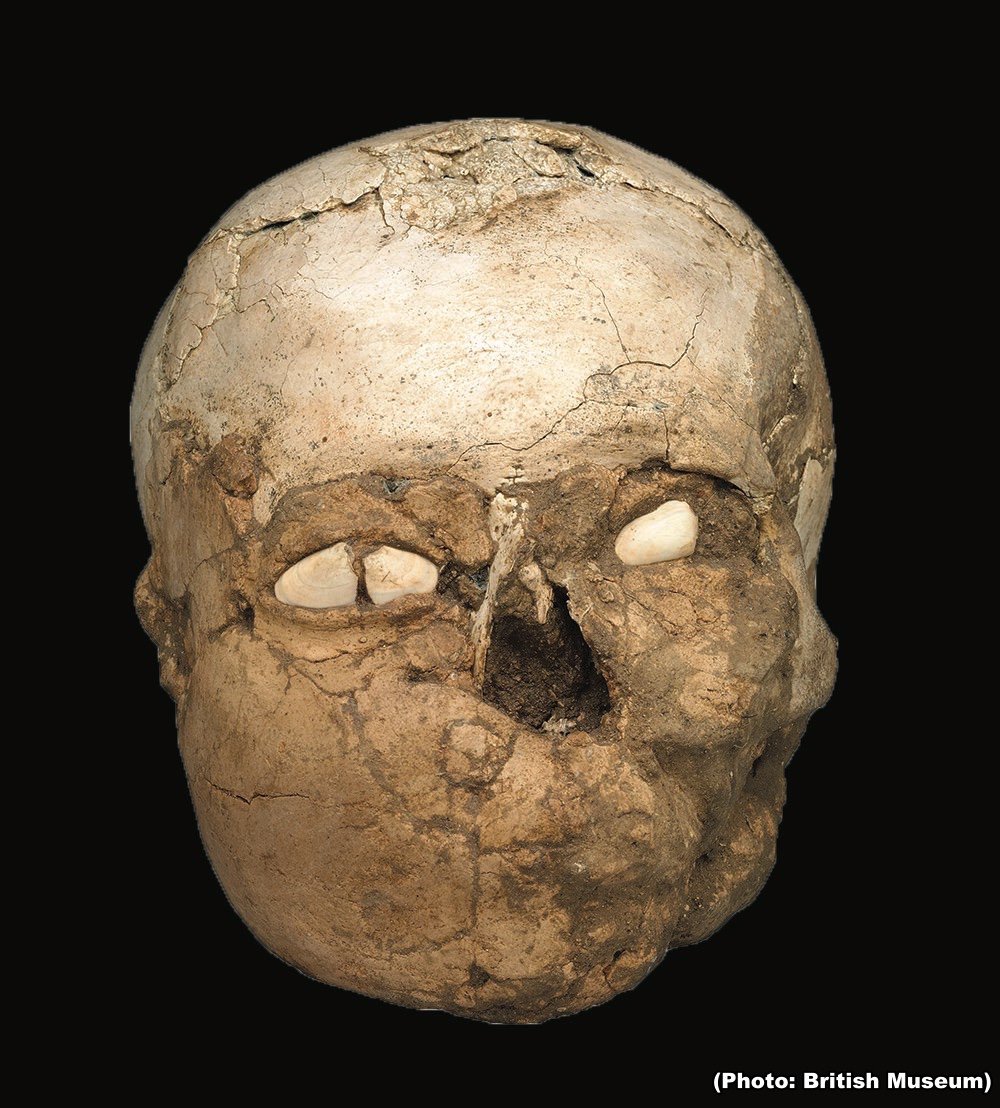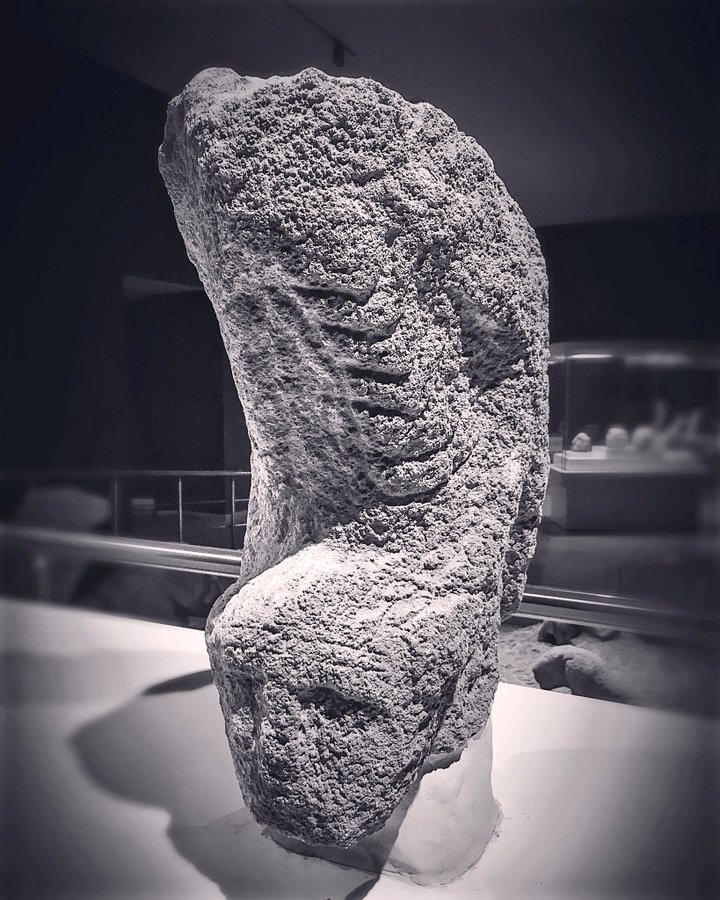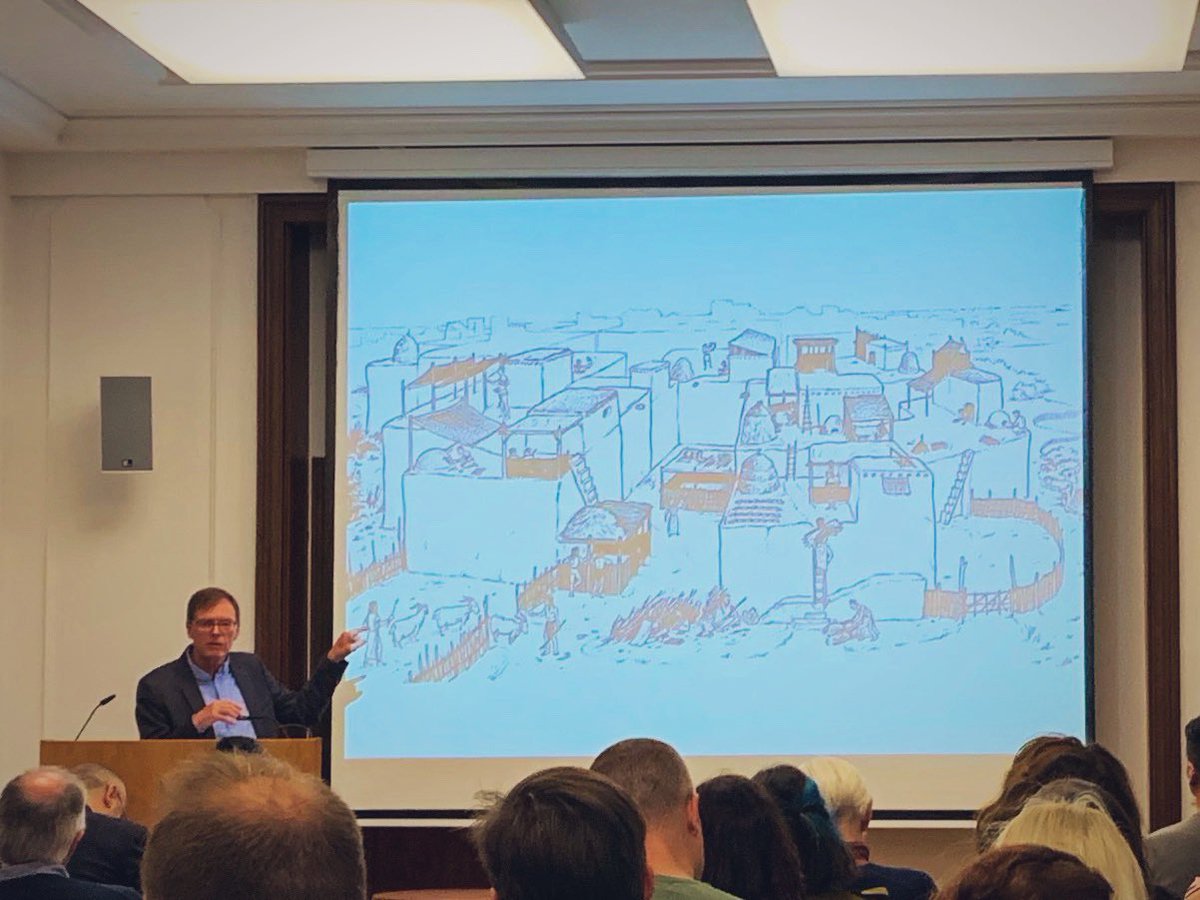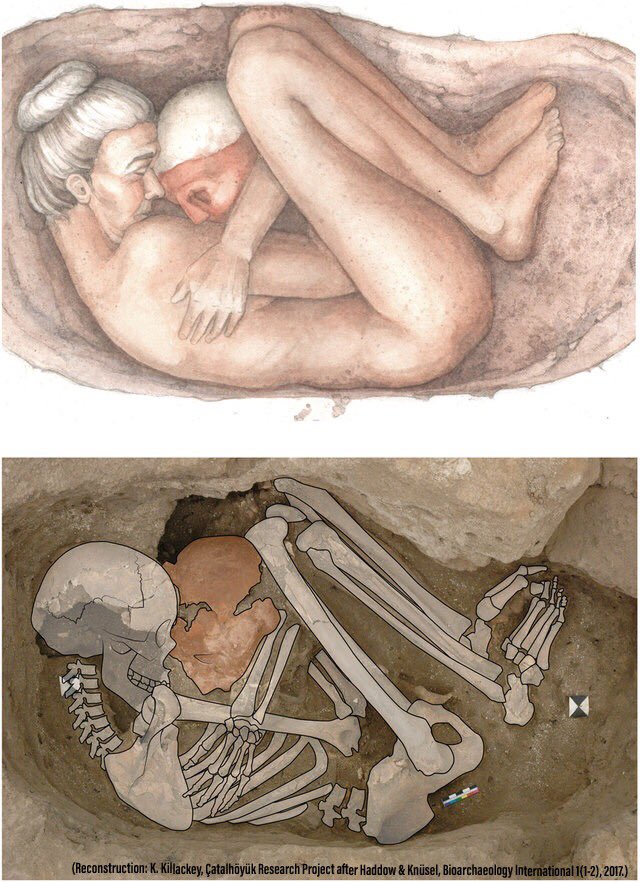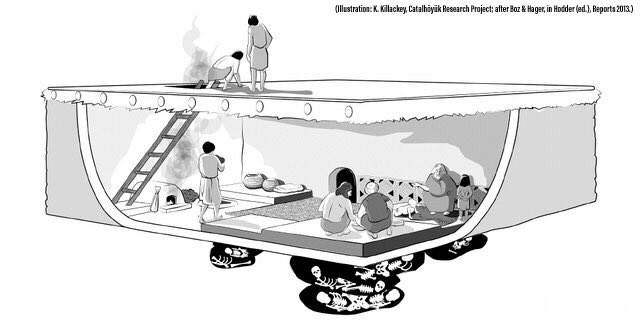Human engagement with #death led to a variety of #mortuary practices. In #archaeology we& #39;re usually confronted with their final result, but often left with only vague ideas of underlying concepts.
This makes peculiar present #funeral practices valuable sources. A short thread.
This makes peculiar present #funeral practices valuable sources. A short thread.
The custom of #SykBurials, reportedly still practiced in parts of Asia, is one of those cues allowing us a gentle glimpse into the manifold ways humans handle death and dying (warning: POSSIBLY EXPLICIT CONTENT).
https://aeon.co/videos/to-tibetan-buddhists-sky-burials-are-sacred-to-tourists-theyre-a-morbid-curiosity">https://aeon.co/videos/to... via @aeonmag
https://aeon.co/videos/to-tibetan-buddhists-sky-burials-are-sacred-to-tourists-theyre-a-morbid-curiosity">https://aeon.co/videos/to... via @aeonmag
Consigning the physical remains of a deceased to scavenging birds is an indeed interesting concept:
Transporting the dead body (and undead soul?) into an afterlife - figuratively (& #39;flying away with the bird& #39;) and literally (being eaten rather than decaying).
Transporting the dead body (and undead soul?) into an afterlife - figuratively (& #39;flying away with the bird& #39;) and literally (being eaten rather than decaying).
Personally, I find this particularly interesting due to my own work and research regarding the so-called #PrePotteryNeolithic in the #Levant and #Mesopotamia - which also has produces some hints at a remarkable #mortuary #ritual.
Best known examples might be the famous Neolithic plastered human skulls from sites like #TellEsSultan ( #Jericho): Specific individual& #39;s heads were given back a face with gypsum and shells and paint - and then apparently displayed.
https://blog.britishmuseum.org/facing-the-past-the-jericho-skull">https://blog.britishmuseum.org/facing-th...
https://blog.britishmuseum.org/facing-the-past-the-jericho-skull">https://blog.britishmuseum.org/facing-th...
Another example are the also Neolithic burials from #KörtikTepe in Turkey: Here, the bones of many individuals were plaster-covered and elaborately painted.
https://www.cambridge.org/core/journals/european-journal-of-archaeology/article/bone-or-flesh-defleshing-and-postdepositional-treatments-at-kortik-tepe-southeastern-anatolia-ppna-period/21B8788E4BC4F9B913CD65E84424EA0D">https://www.cambridge.org/core/jour...
https://www.cambridge.org/core/journals/european-journal-of-archaeology/article/bone-or-flesh-defleshing-and-postdepositional-treatments-at-kortik-tepe-southeastern-anatolia-ppna-period/21B8788E4BC4F9B913CD65E84424EA0D">https://www.cambridge.org/core/jour...
This, plastering and painting, of course only could have been done to the bare bones once there was no flesh anymore - hinting at a later exhumation of bodies ... or #excarnation (& #39;defleshment& #39;) in the course of #burial #ritual.
Interestingly, there are #Neolithic contexts and physical traces on bones which could hint at, as Hodder & Meskell put it in their article in Current Anthropology 52(2), 2011, "a concern for the processes of #bodily #articulation or #disarticulation".
http://radicalanthropologygroup.org/sites/default/files/pdf/class_text_136.pdf">https://radicalanthropologygroup.org/sites/def...
http://radicalanthropologygroup.org/sites/default/files/pdf/class_text_136.pdf">https://radicalanthropologygroup.org/sites/def...
Among these traces are e.g. #CutMarks on human bones - whose origin and meaning, admittedly, can have a variety of possible reasons ... of which the removal of flesh *might* be one.
Here& #39;s a recent study on skull fragments from #GöbekliTepe for instance: https://advances.sciencemag.org/content/3/6/e1700564">https://advances.sciencemag.org/content/3...
Here& #39;s a recent study on skull fragments from #GöbekliTepe for instance: https://advances.sciencemag.org/content/3/6/e1700564">https://advances.sciencemag.org/content/3...
The complex PPN #iconography adds to this. A recurring motive at #GöbekliTepe, #CatalHöyük and others e.g. are depictions of birds (e.g. #vultures) and separated human heads - or headless bodies:
https://www.dainst.blog/the-tepe-telegrams/2017/05/17/a-separated-head-between-animals-on-a-stone-slab-from-goebekli-tepe">https://www.dainst.blog/the-tepe-...
https://www.dainst.blog/the-tepe-telegrams/2017/05/17/a-separated-head-between-animals-on-a-stone-slab-from-goebekli-tepe">https://www.dainst.blog/the-tepe-...
Furthermore, among the bones of birds found at #GöbekliTepe, necrophagous species (i.e. feeding on corpses) like vultures and corvids (crows, ravens etc.) were dominating - much more than usually expected in contemporary settlements ...
#v=onepage&q&f=false">https://books.google.de/books?id=CdnECgAAQBAJ&lpg=PA72&ots=p-zf2UTP3h&dq=notroff%20et%20al%20gathering&hl=de&pg=PA65 #v=onepage&q&f=false">https://books.google.de/books...
#v=onepage&q&f=false">https://books.google.de/books?id=CdnECgAAQBAJ&lpg=PA72&ots=p-zf2UTP3h&dq=notroff%20et%20al%20gathering&hl=de&pg=PA65 #v=onepage&q&f=false">https://books.google.de/books...
... so, either Neolithic hunters really had a thing for crows and ravens (feathers?) - or something seemed to have attracted quite a large number of such birds to this site high up in the mountains.
To this day, the practice of #SkyBurials remains an often referenced cultural phenomenon in the discussion of & #39;special& #39; (i.e. & #39;odd& #39; in our western perception) #burial customs (again: likely EXPLICIT CONTENT):
https://www.nytimes.com/1999/07/03/world/lirong-journal-tibetans-and-vultures-keep-ancient-burial-rite.html?pagewanted=all">https://www.nytimes.com/1999/07/0... via @nytimes
https://www.nytimes.com/1999/07/03/world/lirong-journal-tibetans-and-vultures-keep-ancient-burial-rite.html?pagewanted=all">https://www.nytimes.com/1999/07/0... via @nytimes
And while I of course do not intend to equal modern-day #SkyBurial in Asia with prehistoric #funerary practices, analogies like this do provide a useful frame to evaluate our archaeological data along the large variety of human responses towards death - and #funerary diversity.
Short addition to this thread: Speaking of funerary diversity - I just had the pleasure following an interesting summary of "25 years of research at #Catalhöyük by Ian Hodder earlier today and since he was touching the fascinating topic of the complexity of burials there ...
Hodder again mentioned the removal of #skulls from #burials, their replastering and circulation among the settlement.
This and the practice of & #39; #secondary& #39; (i.e. re-) burial seems a particular phenomenon of the later phases pf occupation at #Catalhöyük.
https://www.researchgate.net/publication/318042962_Skull_Retrieval_and_Secondary_Burial_Practices_in_the_Neolithic_Near_East_Recent_Insights_from_Catalhoyuk_Turkey">https://www.researchgate.net/publicati...
This and the practice of & #39; #secondary& #39; (i.e. re-) burial seems a particular phenomenon of the later phases pf occupation at #Catalhöyük.
https://www.researchgate.net/publication/318042962_Skull_Retrieval_and_Secondary_Burial_Practices_in_the_Neolithic_Near_East_Recent_Insights_from_Catalhoyuk_Turkey">https://www.researchgate.net/publicati...
Even more interesting (and the reason I ... uh, pun ... dig up this thread again) was his description of evidence for #delayed #burial and the special treatment of bodies to keep them in anatomical position (e.g. wrapping bundles).
https://www.researchgate.net/publication/289525849_Living_above_the_Dead_Intramural_Burial_practices_at_Catalhoyuk">https://www.researchgate.net/publicati...
https://www.researchgate.net/publication/289525849_Living_above_the_Dead_Intramural_Burial_practices_at_Catalhoyuk">https://www.researchgate.net/publicati...
Also #smoking was a particularly mentioned possibility for such special treatment. And yes, there are ethnographic analogies for this practice too - e.g. the smoked #Anga #mummies from #PapuaNewGuinea (warning: EXPLICIT photos).
https://www.livescience.com/50948-photos-smoked-mummies-papua-new-guinea.html">https://www.livescience.com/50948-pho...
https://www.livescience.com/50948-photos-smoked-mummies-papua-new-guinea.html">https://www.livescience.com/50948-pho...
The curious relation of #preservation concepts and techniques (be it food or a dear ancestor ...) is something I find particular fascinating here. https://www.sapiens.org/column/curiosities/embalming-culture-mortuary-customs">https://www.sapiens.org/column/cu...

 Read on Twitter
Read on Twitter